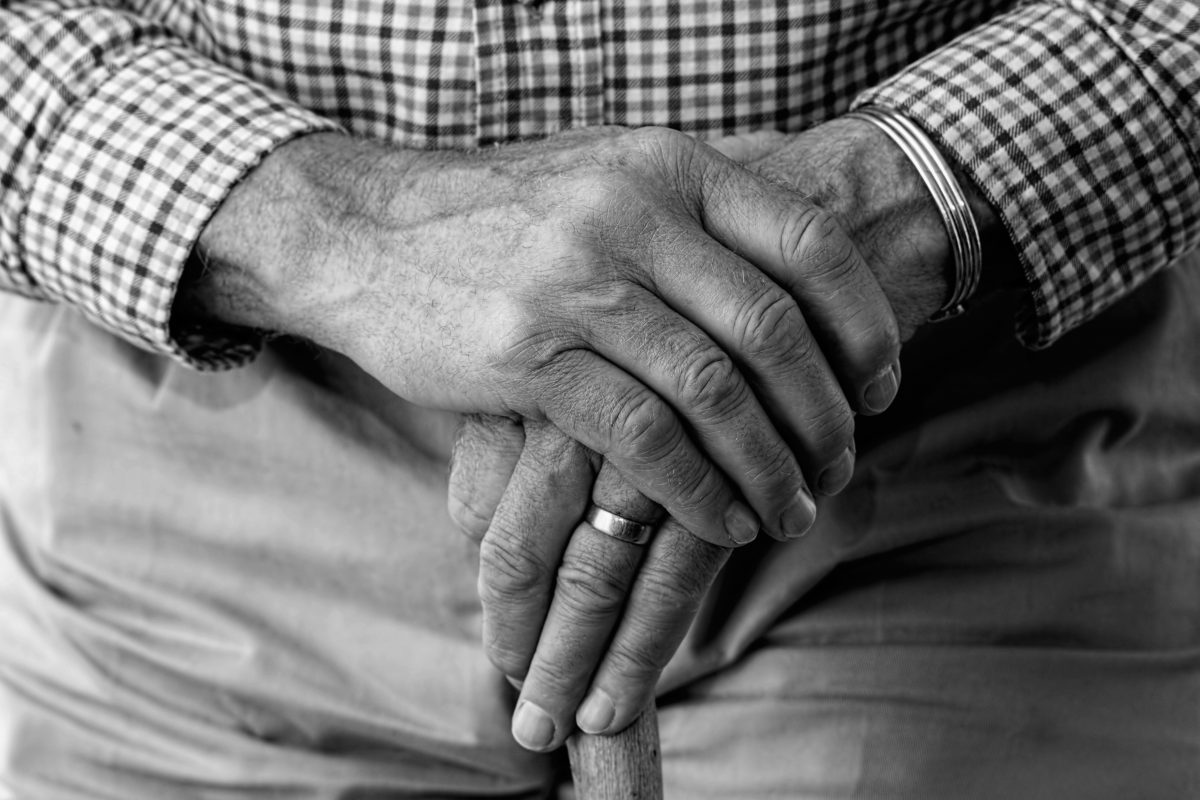It was a cold, fall morning in late November. My class was meeting at a local skilled nursing facility (SNF) to complete our last clinical for nursing fundamentals. The previous night we had all been on campus, much later than expected, completing our semester practical. As a result, our instructor had allowed us to start clinical a couple hours later than usual. Still, faces were overcome with exhaustion as we trudged through the doors. The facility contained about nine hallways with a split patient population. Half of the facility housed the rooms of long-term residents, while the other half was dedicated to those seeking short-term acute care and rehabilitation. On this particular day, I was assigned to one of the acute care hallways. As I made my way up the hall, waking residents and checking their vitals, an older gentleman walking with a cane stopped me. “Hey there, doc!” He greeted with a large smile. “Are you going to check me out?” He asked playfully, as he pointed to the portable monitor at my side and the stethoscope hanging from my neck. I introduced myself and explained that I was a nursing student before checking his vitals, per his request. After reassuring him that his vital signs were all within normal limits, he asked if I could spare a few minutes to sit down and talk. I wrote down his room number and promised him that I would stop by to see him after completing my rounds. Though he seemed skeptical that I would show, he agreed.
When I entered Mr. John Doe’s room his face lit up with excitement. Our conversation started with the normal pleasantries, but quickly evolved. We discussed a number of topics including his alma mater, his career in the military, and his decision to return to his home state as he aged. In all, our conversation lasted only about thirty minutes. While I did enjoy my time with Mr. Doe, to me, it was similar to many of the patient interactions I experienced that day, but to him, that interaction meant so much more. At the conclusion of our conversation, Mr. Doe thanked me profusely for taking the time to talk to him. He had been at the facility approximately two weeks and during this time he described a strong sense of isolation. His family had not been able to visit him and he found it difficult to connect with the other residents, many of whom were cognitively impaired. All Mr. Doe needed was for someone to listen. For someone to give him the opportunity to form a connection. Something so menial. Yet during his stay his needs had not been met.
Social isolation and loneliness are common issues that strongly affect the elderly population. According to Landeiro, Barrows, Musson, Gray, and Leal (2016), between one-third and one-half of all elderly individuals experience social isolation and loneliness. If prolonged, these issues may lead to depression and, ultimately, impact physical health (Landeiro, Barrows, Musson, Gray, & Leal, 2016). The relationship between mental and physical health is well documented in the literature. Recent studies suggest those suffering from depression are at increased risk for developing chronic conditions such as heart disease, stroke, cancer, and diabetes (Voinov, Richie, & Bailey, 2013). In fact, one study found that the risk of developing diabetes is 41% higher for individuals suffering from depression (Yu, Zhang, Lu, & Fang, 2015). The link between mental and physical health also negatively impacts mortality. Higher rates of mortality have been observed among those suffering from mental illness (Chesney, Goodwin, & Fazel). According to Gilman, Sucha, Kinsbury, Horton, Murphy, and Colman (2017), for those suffering from depression, the risk of mortality is up to 50% higher than that of the general population (Gilman, Sucha, Kinsbury, Horton, Murphy, & Colman, 2017).
As nurses, we are often bombarded with tasks and are allotted little time to complete them. The amount of required documentation alone continues to increase due to the litigious culture of society today. As a result, more and more of our time, as healthcare professionals, is spent with a computer and less is spent at the bedside engaging with the patient. We are also confronted with an aging population. The patients of today are much older and sicker than those of past decades. Today, the average patient presents with a lengthy list of comorbidities and due to age and disability, they are inherently more susceptible to social isolation. We must remain mindful of these facts to ensure our practice retains and reflects care and compassion, which represent core values of nursing. When possible, make time to pull up a chair and connect with a patient, avoid splitting attention between the patient and the computer, and always be present in the moment. As the story illustrates, simple actions, such as offering self and active listening, can create a strong impact. These small gestures may even contribute to improved patient outcomes.
References
Chesney, E., Goodwin, G., & Fazel, S. (2014). Risks of all-cause and suicide mortality in mental disorders: A meta-review. World Psychiatry, 13(2), 153-160. Doi: 10.1002/wps.20128
Gilman, S., Sucha, E., Kingsbury, M., Horton, N., Murphy, J., & Colman, I. (2017). Depression and mortality in a longitudinal study: 1952-2011. CMAJ, 189(42), e1304-e1310. Doi: 10.1503/cmaj.170125
Voinov, B., Richie, W., & Bailey, R. (2013). Depression and chronic diseases: It is time for a synergistic mental health and primary care approach. The Primary Care Companion for CNS Disorders, 15(2). Doi: 10.4088/PCC.12r01468
Yu, M., Zhang, X., Lu, F., & Fang, L. (2015). Depression and risk for diabetes: A meta-analysis. Canadian Journal of Diabetes, 39(4), 266-272. Doi: 10.1016/j.jcjd.2014.11.006
Share this Post

